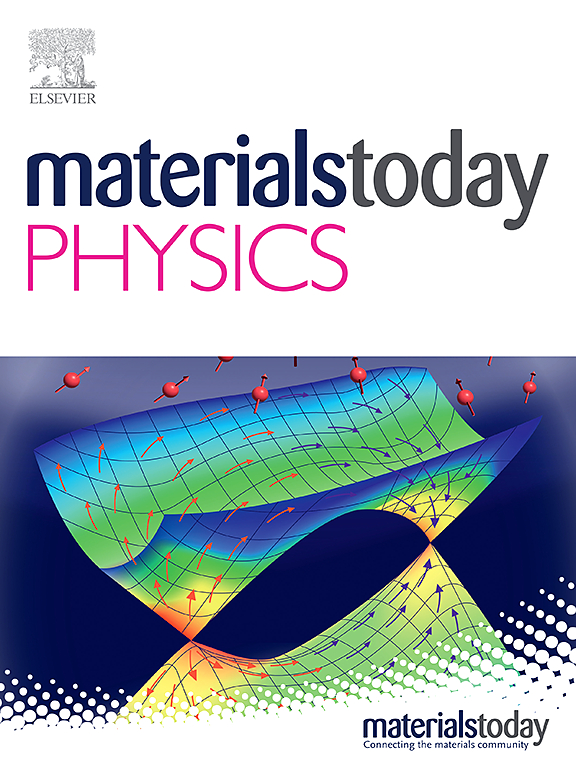Approaching to low thermal conductivity limit in layered materials through full-spectrum phonon band engineering
IF 10
2区 材料科学
Q1 MATERIALS SCIENCE, MULTIDISCIPLINARY
引用次数: 0
Abstract
Exploring the lower bound of thermal conductivity in fully dense solids holds significant fundamental and practical importance. Rotation stacked layered materials have been proven as a unique platform to achieve low thermal conductivity, but the reported performance should be partially attributed to the size effects of the ultrathin film. Here, we theoretically demonstrate the possibility of using full-spectrum phonon band engineering to achieve a through-plane thermal conductivity as low as 0.046 W m−1 K−1 in a sufficiently large rotation stacked MoS2/WSe2 structure, which is three orders of magnitude smaller than its bulk counterpart, MoS2, and is among the lowest thermal conductivity values ever reported. We trace this behavior in the hetereostructure to the suppression of longitudinal acoustic phonon branch due to heavier atomic mass, and to the mass alternating induced increase of frequency intervals that effectively inhibits the energy hopping of localized high-frequency modes. We highlight the importance of suppression of the thermal conductivity from high-frequency vibrational modes, which usually lies outside of the conventional strategies of designing of low thermal conductivity materials. We also find that the hetereostructure has an extremely high thermal conductivity anisotropy ratio of 1150. This work provides new insight into the nature of thermal transport at a quantitative level and valuable guidelines for searching and designing new ultralow thermal conductivity material of potential interest for effective thermal management.
利用全谱声子带工程逼近层状材料的低导热极限
探索全致密固体中导热系数的下限具有重要的基础和实际意义。旋转堆叠层状材料已被证明是实现低导热性的独特平台,但所报道的性能应部分归因于超薄膜的尺寸效应。在这里,我们从理论上证明了使用全谱声子带工程在足够大的旋转堆叠MoS2/WSe2结构中实现低至0.046 W m-1 K-1的通平面热导率的可能性,该结构比其块体对偶MoS2小三个数量级,并且是有史以来报道的最低热导率值之一。我们将异质结构中的这种行为归因于较重的原子质量对纵向声子分支的抑制,以及质量交替引起的频率间隔的增加,从而有效地抑制了局域高频模式的能量跳变。我们强调了抑制高频振动模式的热导率的重要性,这通常是设计低热导率材料的常规策略之外的。我们还发现异质结构具有极高的导热系数各向异性比1150。这项工作在定量水平上提供了对热传递性质的新见解,并为寻找和设计新的超低导热材料提供了有价值的指导,这些材料可能对有效的热管理感兴趣。
本文章由计算机程序翻译,如有差异,请以英文原文为准。
求助全文
约1分钟内获得全文
求助全文
来源期刊

Materials Today Physics
Materials Science-General Materials Science
CiteScore
14.00
自引率
7.80%
发文量
284
审稿时长
15 days
期刊介绍:
Materials Today Physics is a multi-disciplinary journal focused on the physics of materials, encompassing both the physical properties and materials synthesis. Operating at the interface of physics and materials science, this journal covers one of the largest and most dynamic fields within physical science. The forefront research in materials physics is driving advancements in new materials, uncovering new physics, and fostering novel applications at an unprecedented pace.
 求助内容:
求助内容: 应助结果提醒方式:
应助结果提醒方式:


